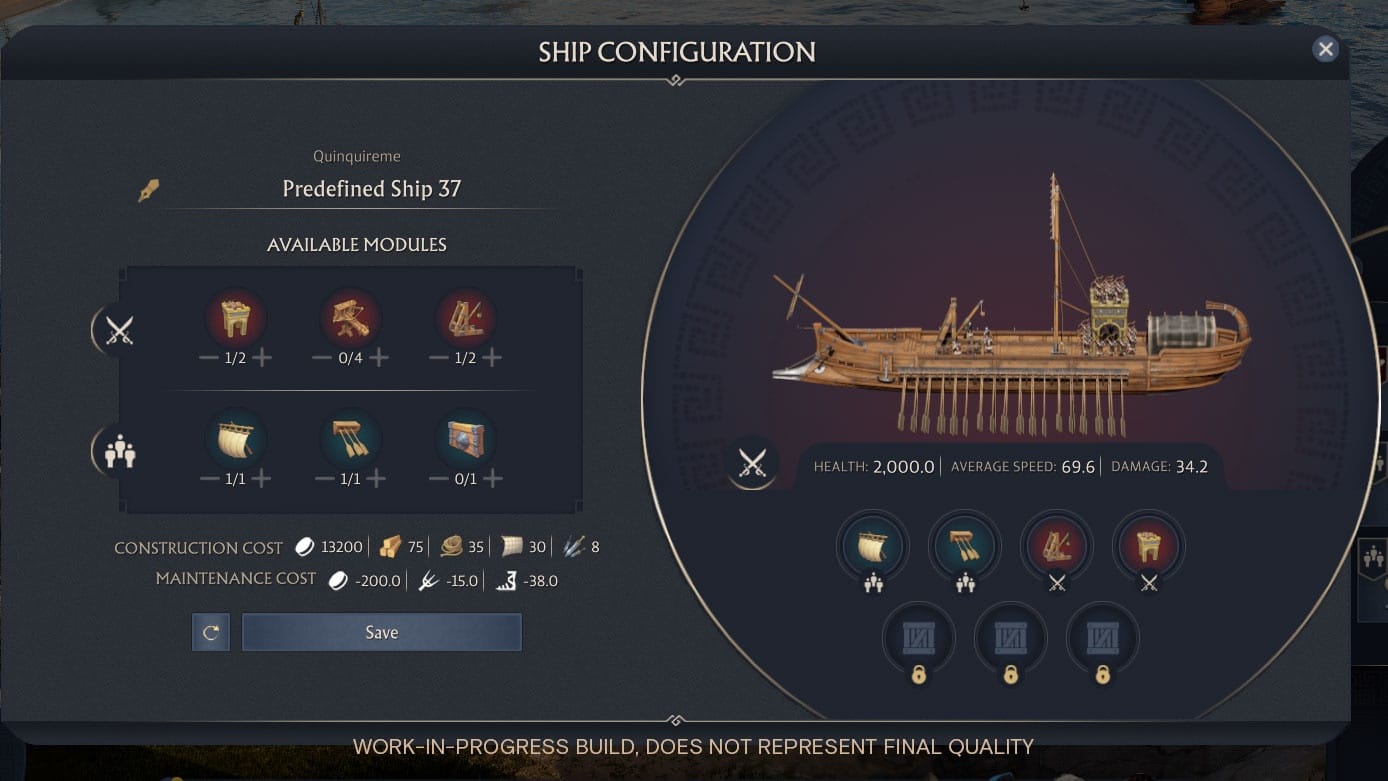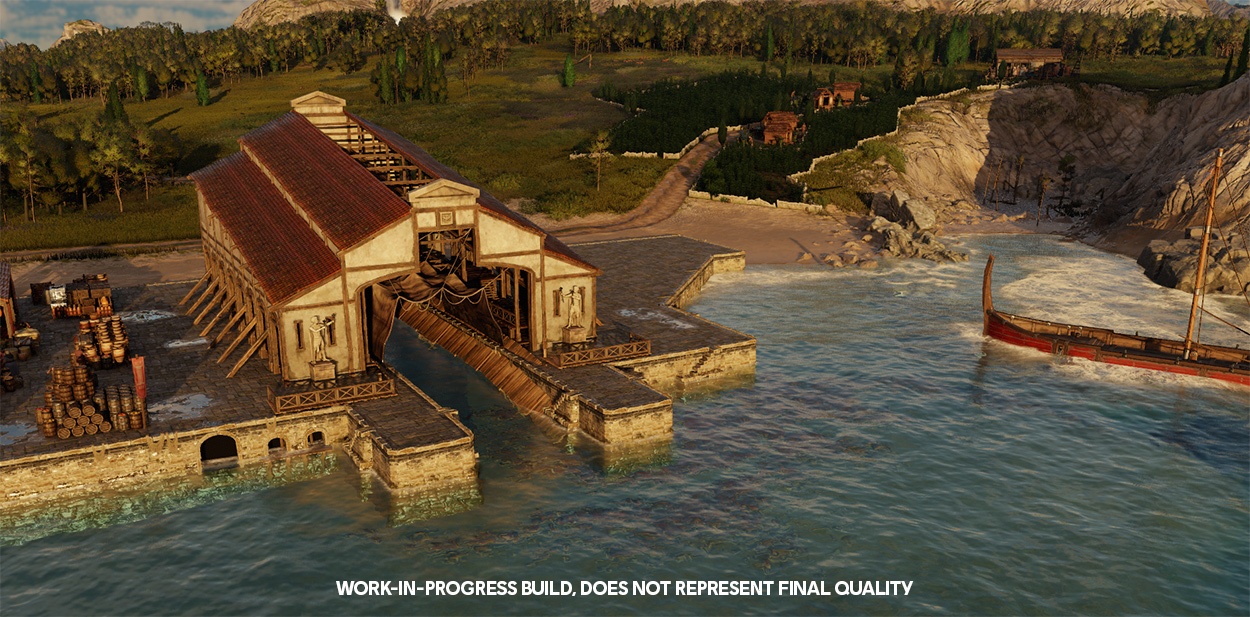A new Anno blog is now taking an even closer look at the modular ship system and explaining exactly how it works.
At the end of February, Ubisoft surprised us with an unexpected announcement about Anno 117: Pax Romana. This time, the city-building game lets us decide which equipment a ship should set sail with in a modular way.
However, the system was only presented superficially and left many questions unanswered. Now the team is following up in a blog post on the Anno Union and is finally delving deeper into this exciting new feature .
As expected, there is not just one ship type in Anno 117, but three freely customizable hulls. The hulls are divided into small ships, medium ships and large ships. Each type has a different number of module slots:
- Penteconter: Small ship with 2 modification slots
- Trireme: Medium-sized ship with 3 modification slots
- Quinquireme: Large ship with 4 modification slots
Each selected module not only occupies one of the modification slots, but also reduces the cargo space by one slot. So if you only build a hull without modifications, you can load most goods, but you will lose various other advantages. However, ships are never completely out of storage.
There are a total of six different modifications for your ships:
- Mast: An additional sail makes the ship faster and increases its top speed. It also allows the ship to change region more quickly.
- Oarsman: Oarsmen make ships faster, enabling them to accelerate and swim faster and maneuver more agilely.
- Reinforced Hull: The ship gets more hit points.
- Archer Turrets: Fires arrows at close range.
- Scorpio: Fires precise spears to the side of the ship, causing high damage at medium range.
- Onager: Shoots boulders forward and deals high damage at long range.
Modules can be installed multiple times, but not an unlimited number, depending on the ship. For example, you can install two mast modules and one rower on a trireme with its three free slots. Or two scorpios and one onager. For a penteconter, 16 variants are possible, for a trireme 60 and for a quinquireme 114 variants.
Ship items such as captains will also be available again, which will probably also take up a space in the storage room. However, there are no more details here yet.
How the ships are built
Unlike in the gameplay video, you can no longer modify the ships once they are sailing the waves. You have to determine which modifications you want when you customize your ship in the shipyard.
You can then also save this loadout and produce it again and again. However, each shipyard only has a maximum of two slots for one hull type and thus six possible mod blueprints. So if you want to produce even more variants on the assembly line, you need a new shipyard.
If you don’t feel like it, you can also choose from a range of pre-built ship types that come with fixed modifications.
Goods and labor – this is where it gets exciting!
The hull in combination with the chosen modifications determines the production and maintenance costs. Based on the screenshot shown from the ship construction kit, we also know what goods
you need to cart around for production:
- Money
- Wood
- Ropes
- Sails
- Workers
- Labor
But it’s the maintenance costs that are really interesting. Because this time they will not only cost you money, but also labor. But Ubisoft is removing the influence limit! It is still unclear whether Anno 117 will completely discard the influence system from Anno 1800 or just keep out the limit on ships. Instead, you have to have enough labor, and, judging from the screenshot, it is not just made up of one population level. This raises many further questions. For example, whether there is labor for the entire empire in addition to the labor on an island. After all, ships are not tied to one place, but row from island to island with relish.
And what happens to the ships when they run out of labor? Do they sink? Do they just stop? There are bound to be answers to these questions, but Ubisoft has yet to provide them.




